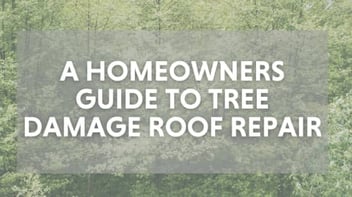- Home »
- Learningcenter »
- Roof damage from trees
Roof Damage from Trees: Prevention, Repairs, and Maintenance
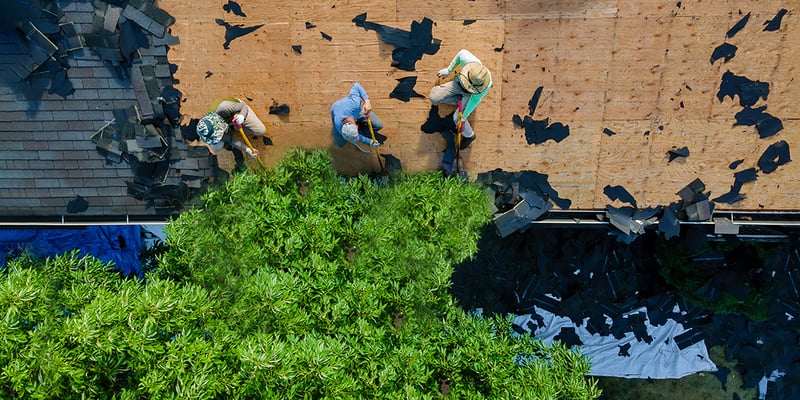
When you think about roof damage from trees, you likely think of the most extreme circumstances where a large branch or an entire tree falls on your home and causes structural damage. While this certainly can happen, it’s also important to understand that other less noticeable types of damage can be caused by trees near your home.
There are a number of ways that trees can cause damage to your roof– everything from debris deteriorating your shingles and clogging your gutters to providing an access path for animals to get onto your roof and into your attic– that you’ll want to be aware of.
Even if you can’t see damage on your roof from the ground, nearby trees can compromise the ability of your roof to perform at its best if you don’t regularly maintain both your trees and your roof. Let’s look at how to prevent roof damage, what the repair process looks like when damage occurs, and more.
How to Identify Roof Damage From Trees
Though roof damage from trees is, in some cases, abundantly evident, in other circumstances, it might not be immediately apparent that a tree has caused damage to your roof. For this reason, it’s essential to inspect your roof after storms and conduct regular inspections to keep an eye out for some of the tell-tale signs of roof damage.
Missing Shingles
If you start to notice that there are shingles missing from your roof, one of the potential causes is damage from nearby trees. Other potential causes include high winds and animals such as raccoons and squirrels.

Even if a tree doesn’t directly cause damage to your roof, nearby branches can be the means through which critters are able to get onto your roof. As they work to get into your crawlspace or attic, they can cause all kinds of damage, including ripping off or displacing your shingles.
Scratched, Cracked, or Broken Shingles
Perhaps the most obvious sign that your roof has been damaged by trees is when you can see clear evidence that your shingles are cracked, scratched, or broken. Furthermore, shingles that are not lying flat or curling up are signs that a tree has damaged your roof.
This kind of shingle damage can result from overhanging branches or just needles or leaves falling from them. As you might imagine, large branches or entire trees falling on your roof will cause this issue in addition to potential structural problems.

Scratched, cracked, or broken shingles can also result from storms and extreme weather events. During the winter, it’s important to be mindful of the potential for ice to build up on tree branches, as this can weigh them down so that they come in contact with your roof or break off and fall on your roof.
Mold or Moss Growth
Both mold and moss require moisture in order to thrive. If you notice either of these types of microorganisms growing on your roof, it’s an indication that there is moisture present, which often means that there is likely a leak in your roof.

The conditions in which mold and moss can grow can even be caused by a large tree casting shadows on top of your structure, in which case trimming the branches of the tree can be a viable solution.
Fallen Needles and Leaf Litter
While this is to be expected in the fall to some extent, the presence of needles or leaves throughout the year can indicate a drainage problem in your roof system.

If your gutters and downspouts are getting filled with leaves and needles, it can clog them and lead to water backing up. This water can get up underneath your shingles or cause pooling on your roof, both of which can lead to leaks and other problems.
Animals on Your Roof
If you notice animals on your roof or in your attic, it’s important to try to discern how they gain access.
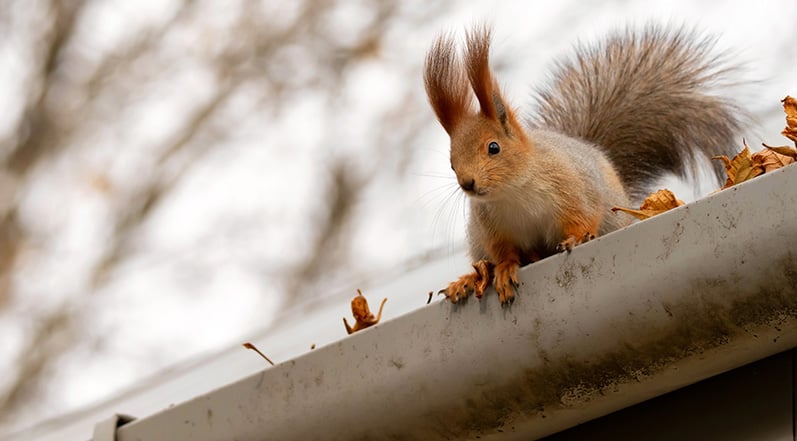
Nearby trees should be one of the first things you investigate, as there’s a good chance that squirrels, raccoons, or other critters are utilizing their branches as a highway right to your roof.
Falling Fruits and Nuts on Your Roof
The leaves and needles of trees aren’t the only things that can cause problems for your roof– falling fruits or nuts can end up cracking or breaking your shingles, as well as clogging up your gutters.

Additionally, animals like birds and squirrels will be drawn to the food source of fallen fruits and nuts on your roof. This can draw critters to your roof, which can wreak all sorts of havoc on your system.
Shadows Cast on Your Roof
Even if a tree near your home doesn’t drop branches, needles, leaves, nuts, or fruit on your roof, it can still cause damage. By casting shadows on your roof and blocking sunlight, it’s possible that the area will become damp, allowing moss and mold to grow.

It’s also more difficult for your roof to dry out after a rainstorm when it doesn’t get adequate access to sunlight. At the same time, trees can help protect your roof from harmful UV rays that quicken the breakdown of your roofing materials and heat up your attic. If you are concerned about a tree casting a shadow on your roof, it’s worth talking to a professional roofer about whether the tree is being more helpful or hurtful to your roofing system.
How to Prevent Roof Damage From Trees
Prevention is always the best medicine. If you have trees near your home, it’s important to take steps to help avoid an outcome where you need to make roof repairs due to tree damage.
Maintain Tree Health
One of the most important things you can do to prevent roof damage from trees is to practice proper maintenance on any trees on your property. It’s generally a good idea to consult with a professional arborist regarding tree maintenance, particularly for larger trees. They will be able to help you understand your tree’s health and what steps need to be taken at what intervals to protect both the tree and your roof.
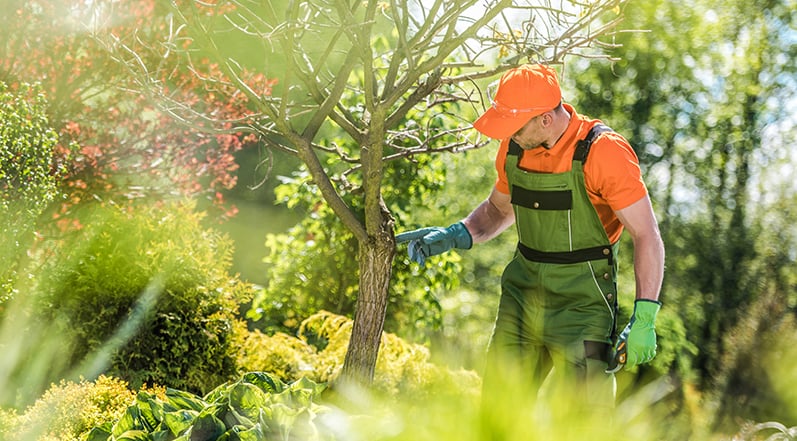
If you don’t work to maintain tree health, it can lead to the tree becoming diseased or even dying. A dead tree is the last thing you want right next to your house, as the question doesn’t become if it will fall, but when.
Prune Trees
Regularly pruning your trees is one of the best ways to prevent the potential roof damage that trees can cause. By pruning your trees, you can reduce the chances that critters will use trees to access your roof and help to keep branches from breaking or drooping.
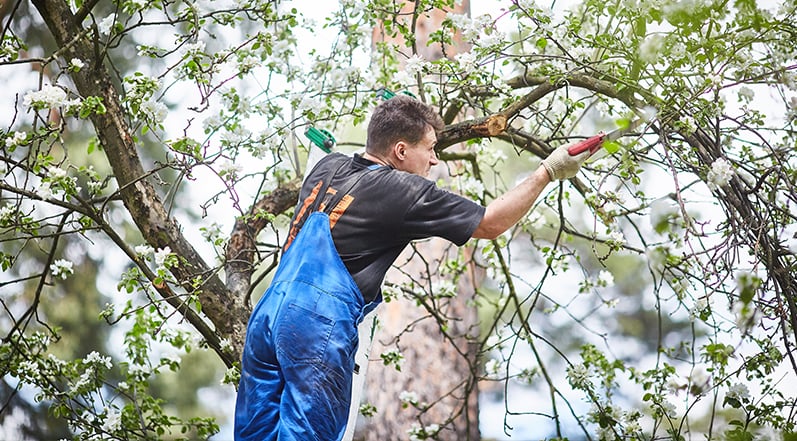
Pruning trees is one of those things that is both an art and a science– if you don’t do it right, it’s possible you could damage the trees and cause further problems for yourself down the road. Additionally, pruning tall trees can mean taking on many safety risks, both in terms of working on a ladder and ensuring that branches don’t harm people or structures on their way down to the ground.
For this reason, it can be worth hiring a professional arborist or landscaper to prune the trees near your home. Not only will they be able to remove problematic branches in a way that is safe for them, your property, and the tree itself, but they will also be able to offer advice about other potential tree-related problems near your home.
Tree Selection and Placement
There are countless benefits to having trees in your own yard– including buffering noise pollution, slowing water runoff, providing shade and windbreaks, increasing property value, and adding to the peaceful environment of your property. The fact that trees can cause damage to your roof and structure doesn’t mean you shouldn’t plant them in the first place, but it does mean you’ll want to be mindful and thoughtful when it comes to both the types of trees you choose and where you decide to plant them.

If you are planting trees near your home, you’ll want to look for species and varieties that are naturally shorter in height or have a smaller canopy. It’s also important to be aware of the root system of different tree species– some root systems are aggressive and can cause trouble for foundations, sidewalks, soil pipes, and other important infrastructural components that you definitely do not want to be compromised.
You’ll also want to make sure that you plant any trees a safe distance from your home– you’ll want to consider the tree’s size and breadth when it reaches full maturity before choosing your planting location.
Keep Your Roof Clear of Tree Debris
It’s important to clean up dropped needles, leaf litter, nuts, and fruits regularly to ensure that your gutters and downspouts can carry water away from your home. If you are comfortable walking around on your roof or working from a ladder, you can use a soft-bristled broom or brush to sweep away this debris.
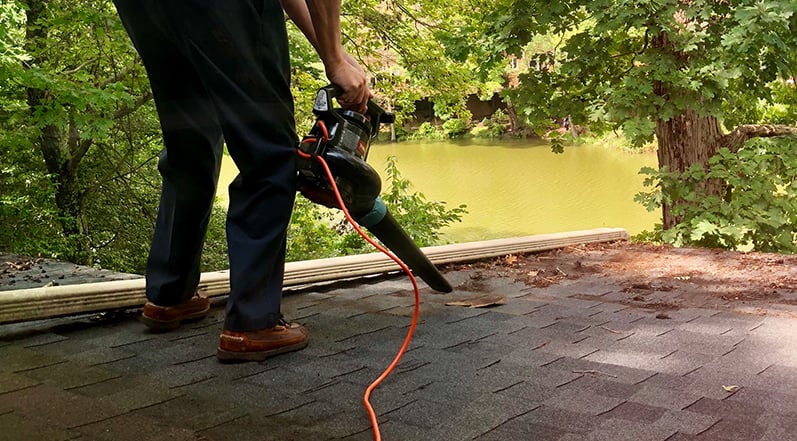
You can also hire professional roofers to help clear debris from your roof if you don’t feel comfortable doing this yourself. The pros will have all of the safety equipment and experience necessary to do this, and at the same time, they can keep an eye out for potential problems on your roof.
Maintain Gutters and Install Gutter Guards
Gutter guards can help prevent debris like needles, leaves, and nuts from accumulating in your gutters and ensure that water is able to flow as intended away from your roof and structure.
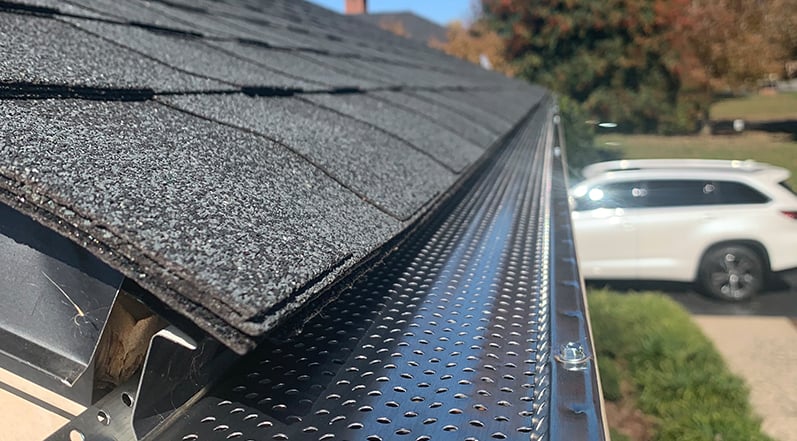
Regular gutter maintenance is also essential– it is generally recommended that gutters are cleaned twice a year.
Regularly Inspect Your Roof
Tree damage on your roof isn’t always apparent from the ground– for this reason, it’s important to conduct regular roof inspections.
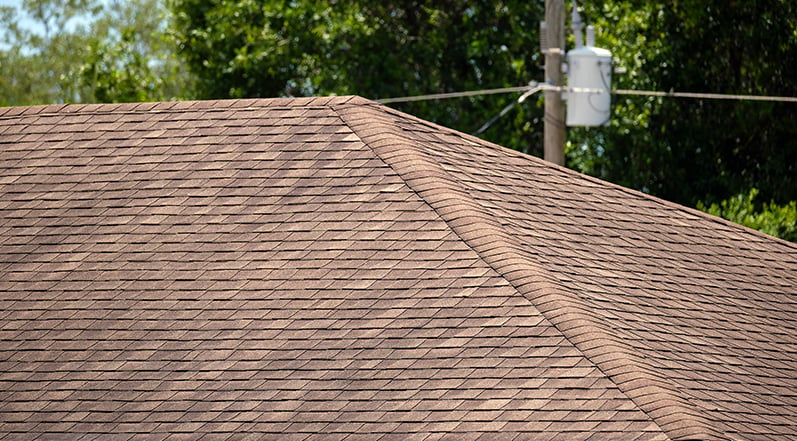
A professional roofer can take a look at your roof at regularly scheduled intervals to look for signs of roof damage, including damaged flashing, missing shingles, or branches that are rubbing against your roof. If they discover any issues, you’ll want to address them promptly.
How to Repair Roof Damage From Trees
The repair process when a tree has damaged your roof can vary quite a bit based on the nature of the event and the damage. Shingle damage caused by falling nuts is going to be a vastly different repair than a large branch or an entire tree falling on your roof, for example.
It is generally advised that you hire a professional roofer to repair tree damage, particularly if the tree could have caused structural damage to your roof.
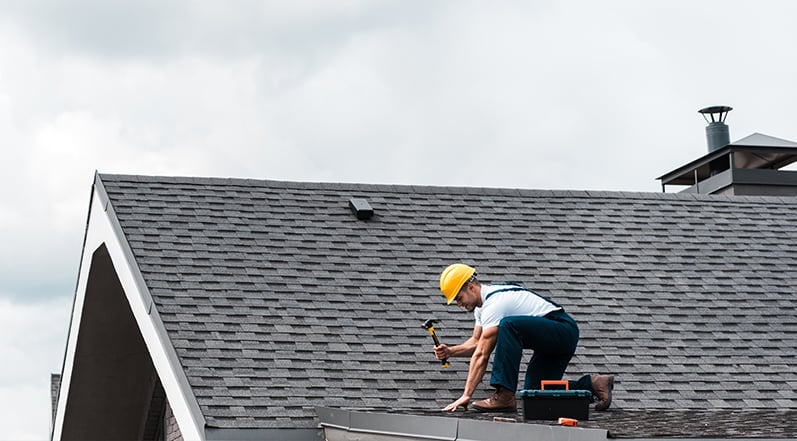
Here’s a sense of what the repair process could consist of:
- ● Safety precautions: Ensuring any trees or branches that could pose a risk are removed or secured, ensuring that there is no structural damage to the roof before walking on it, waiting for favorable weather conditions, having the proper safety equipment, and more.
- ● Damage assessment: A thorough inspection of the roof is necessary to determine the full extent of the damage.
- ● Temporary fixes: Leaks or other openings might require temporary solutions, such as a roof tarp, until a more permanent fix is put in place.
- ● Fixing structural damage: In a severe case where a tree has caused structural damage, a structural engineer or professional contractor will need to address this.
- ● Replacing missing or damaged shingles: Missing or damaged shingles will need to be replaced with the same type and color. You’ll want to consult your warranty regarding shingle repair and replacement to ensure that you don’t accidentally void your warranty.
- ● Repair roof flashing: If the roof flashing was damaged by a tree, damaged sections will need to be replaced and properly secured.
Tree Roof Damage in Atlanta: Consult Colony Roofers
Whether you are being proactive and looking to take some preventative measures to reduce the risk of tree damage or looking for a reputable roofing company to help you with tree-related roof repairs, Colony Roofers is here to help.
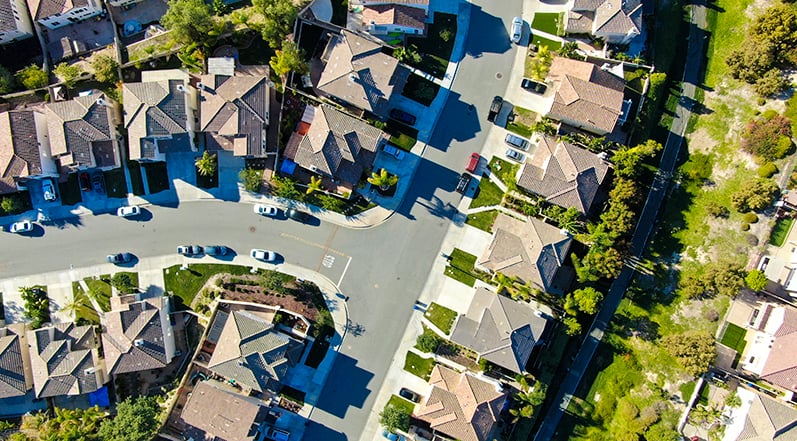
A locally owned and operated professional roofing company in the Atlanta area, Colony Roofers provide high-quality roofs at the most affordable prices, along with excellent customer service. No matter what your roofing needs are, we are always available to provide a free thirty-minute inspection to let you know what issues need to be addressed and what your options are.
If you have tree damage, missing shingles, leaks, or any other roofing concerns, contact us today to schedule your free estimate.
 Call (678) 365-3138
Call (678) 365-3138

